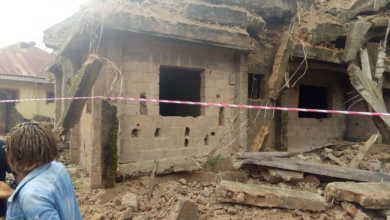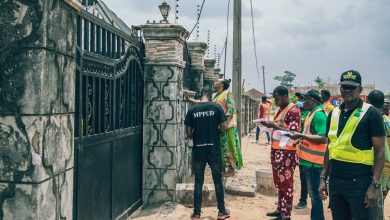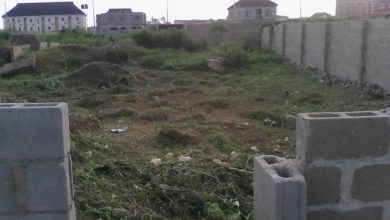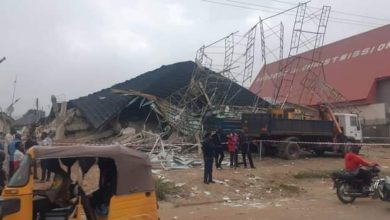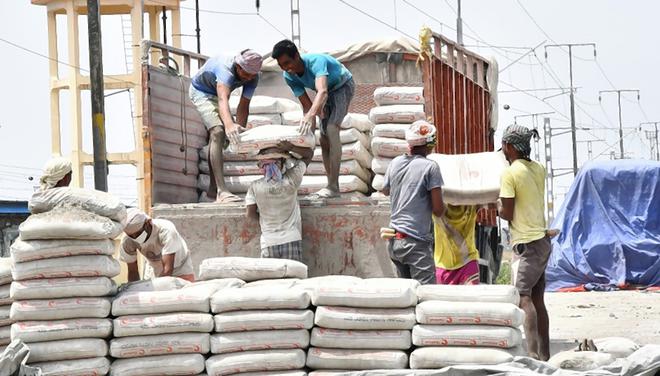
Recently, the price of Cement in two of Nigeria’s biggest industrial and real estate hubs, Lagos and Kano has been on the rise occasioned by price hikes by manufacturers despite the closeness of these cities to manufacturing plants.
While the consumers, builders and prospective homeowners berate the manufacturers for the hike in price and complain bitterly of not enjoying the benefit of being close to the manufacturing hub, the latter blames the increase on the cost of spare parts and logistics, dollar to naira exchange rate etc.
The biggest cement manufacturing plants are owned by Dangote, BUA and Lafarge. While Dongote’s factory is located at Ibeshe, the Lafarge factory is located in Sagamu.
In Lagos, a 50-kilogramme (kg) bag of Dangote Cement, BUA and Lafarge is sold between N4, 300 and N4, 600 in Lekki and other areas where property development is high. In Kano, Dangote cement is about N4, 500, while BUA N4, 700 and Lafarge cost N4, 450 for a 50kg bag
The Trumpet gathered that other areas of the country are experiencing growth in the real estate sector apart from Kano and Lagos. This has increased the demand for cement and raised the cost of building materials, coupled with unfavourable government policies and debt burdens.
Speaking on the development, Group Executive Director, Strategy, Portfolio Development and Capital Projects, Dangote Industries Limited, Edwin Devakumar, said, “We are expanding capacity from about 50,000 tons a day at the beginning of the year to 70,000 tons a day at the end of the year. All other producers in the market can sell at their own price,” He however added that price-fixing does not exist in the present Nigerian market noting further that prices have scaled up as a result of higher demand, increased cost of diesel and unstable supply of gas required for powering manufacturing plants across the country.
Speaking further he said: “Transport fares for moving cement have jumped up, due to congestion at the ports that have resulted in longer turnaround time for trucks.”
Read Also: AMCON property confiscation: Folawiyo seeks injunction, dissociates self from defaulting firm
According to some experts, Lagos is the fastest growing city in Sub-Saharan Africa, and this puts pressure on building materials. The development of Lagos is unprecedented and cement is in very high demand because of an increase in construction activities.
One expert said: “In a situation where demand overshoots supply, you are bound to have such a price surge,’. He blamed the increase on middle players that want to earn higher profits.
Mr. Debo Adejana, Vice President, Real Estate Developers Association of Nigeria (REDAN), Southwest zone when asked said that transportation should not be a factor when it concerns bringing cement to Lagos noting that the price should not be so high, as their returns are being reflected already on the profit declared by the manufacturers. Speaking further he said, “except big developers that could buy in bulk, small private developers, who contribute largely to the increase in the housing stock, find it difficult to do as it reflects on the home prices. Private developers are desirous of engaging manufacturers on how to make cement affordable to their members, adding that they will not relent until it is done”.
Mr Kunle Awobodu the immediate past president of the Nigerian Institute of Building, corroborated the fact that Lagos and Kano have higher demand than in any other city in Nigeria, anticipating cheaper cement prices stating however that the expectations that Lagos should benefit from the closeness of cement factories in Ibeshe, Ewekoro and Sagamu are being affected by the state of roads in some of the locations noting that most of the roads are in a very bad state.
It is expected that before the end of 2022 the cement production capacity of Nigeria should be around 60 million tonnes per annum (mtpa) with Dangote cement controlling about 60.6 percent of the market share, Lafarge Africa Plc 21.8 per cent and BUA Group 17.6 per cent share.
Specifically, Dangote Cement is Africa’s leading cement producer with operations in 10 African countries, revenues over $2.5 billion as well as a production capacity of up to 48.6 million tonnes per annum (Mta) across Africa as of 2020.
Dangote Cement plant in Obajana, Kogi, is the largest in sub-Saharan Africa with 10.25 million tonnes per year capacity across three lines and a further three million tonnes per year capacity currently being built.
In 2012, the firm opened a $1 billion cement plant in Ibese, Ogun. The facility is capable of producing six million metric tonnes of cement per year, raising the company’s total production by 40 per cent at the time.
The company’s plant in Gboko, Benue has three million tonnes per year capacity with an upgrade to four million tonnes per year.
Dangote Cement controls 61 per cent of the market share, Lafarge Africa 22 per cent and BUA Cement the rest.
With BUA Cement planning three new cement plants each having a capacity of 3 million tonnes yearly in Edo, Sokoto and Adamawa states, with the expected completion date put at the end of 2022, It is expected that the total output capacity of 20million metric tonnes will help in reducing the price of Cement in the local market.

